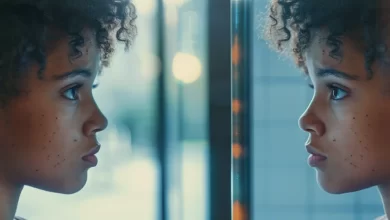Six Effective Tips To Become A Graphic Designer For Beginners
Want to become a Graphic Designer? Six effective tips for Beginners. Graphic designers are artists, more or less.
It’s just that they don’t use the traditional means and tools to create their form of expression. Instead of canvas and brushes, they’ve picked up the powerful computers and endlessly creative software.
They build bridges between art and technology that can speak a thousand words. They contribute heavily in this progressively digital time in production design for ads, magazines, and much more.
Texts, images, and various kinds of media (colors, designs, photographs, animations, logos)- use everything to make things hard-hitting, recognizable, and impactful.
Six Effective Tips To Become A Graphic Designer For Beginners
If you’re intrigued by everything visual, you’ll fit right in. But nothing is easy at the start. So here are six tips that tip the scale in your favor:
- Simplicity- the ultimate sophistication
The best thing a beginner can do is to keep it simple. There’s no use for convoluted designs that fly over everybody else’s heads.
For ‘simple,’ you can converge with the minimalist inside you. Use only the minimum, keep your colors and visuals under check.
You need to send the message with clear connotations, decorated with appealing aesthetics. That’s more than enough.
And like everything, the reservoir of the internet has many tools to help, such as tafe courses, youtube videos, blogs of many experienced professionals to make it simple for you.
- Typography- keep it light.
Setting fonts is a different art altogether for beginners in the world of graphics design.
There’s a generous amount of different fonts on the internet and computers. It can boggle your mind easily.
So, it would be best if you learned to pair fonts together that look cohesive, eye-pleasing, and repeatable. But, of course, you can always fall back on the tried and tested ones. Most professionals use specific classic fonts over and over again.
One easy rule is to keep a novelty font for headings and a regular classic one for all the text. But you can shake that up using a font family with different weightage (e.g., Oswald bold for the heading, and Oswald regular for texts).
- Creating a hierarchy
A visual hierarchy prioritizes the visual importance of some elements over others to make the repercussions greater. Like how the headers are generally larger than subheadings.
The same can be applied to every bit of the design to direct the audience to a focal point. Again, this helps build a flow of information that’s easier to grasp.
4.White Space, good space
White space is not completely “white.” It consists of all the empty areas without texts or elements.
This portion of the design gives the whole thing some breathing space. But, again, this is an aspect that’s easy to learn but hard to master.
You can draw inspiration from minimalism. For example, if you believe “less is more,” you’d only ever need the utmost necessities.
You can use white space by applying negative space too. In this technique, those empty spaces are supposed to tell more of a story than they could between elements or plain background.
Good spacing helps create well-balanced compositions. For example, spaces in margins, between paragraphs, and between every line and word complement the whole piece more than you’d think.
- The color psychology
Human minds associate particular things or feelings with a specific color. So your designs can touch the deepest sinews of the heart if you know and represent the colors as an emotional and cultural attachment.
For example, the black color has positive references to elegance, wealth, and glamor, but mourning, fear, and evil as negative connotations. Every color embodies this duality of meaning.
Even the intensity matters. Strong and bold colors stir up a different reaction than soft pastel colors.
- Organized implementation
Being mentally and physically organized can help in any job, especially something as creative as graphic designing.
An organized workspace saves you from last-minute panic and stress. It frees up your mind and lets you concentrate on what’s important.
Simple things like naming the files, creating folders for your projects, and using a dashboard can help you find the necessary information quickly.
You should list the files to download and the type you require beforehand. That way, you’ll never be confused.
CONCLUSION
As the world is shrinking inside our smartphones, digital goods will only become more popular. And therein lies a great future in graphic design.
A good advertisement can catch people’s eye more frequently and much more effectively than a long book or some boring stats.
Graphic designing will play a crucial role in improving every aspect of that experience for companies and customers.
We Believe This Article Was Helpful, Don’t Hesitate To Share This Information With Your Friends On Facebook, Twitter, Whatsapp and Google plus.
Copyright Warning: Contents on this website may not be republished, reproduced, redistributed either in whole or in part without due permission or acknowledgement. All contents are protected by DMCA.
The content on this site is posted with good intentions. If you own this content & believe your copyright was violated or infringed, make sure you contact us via This Means to file a complaint & actions will be taken immediately.




